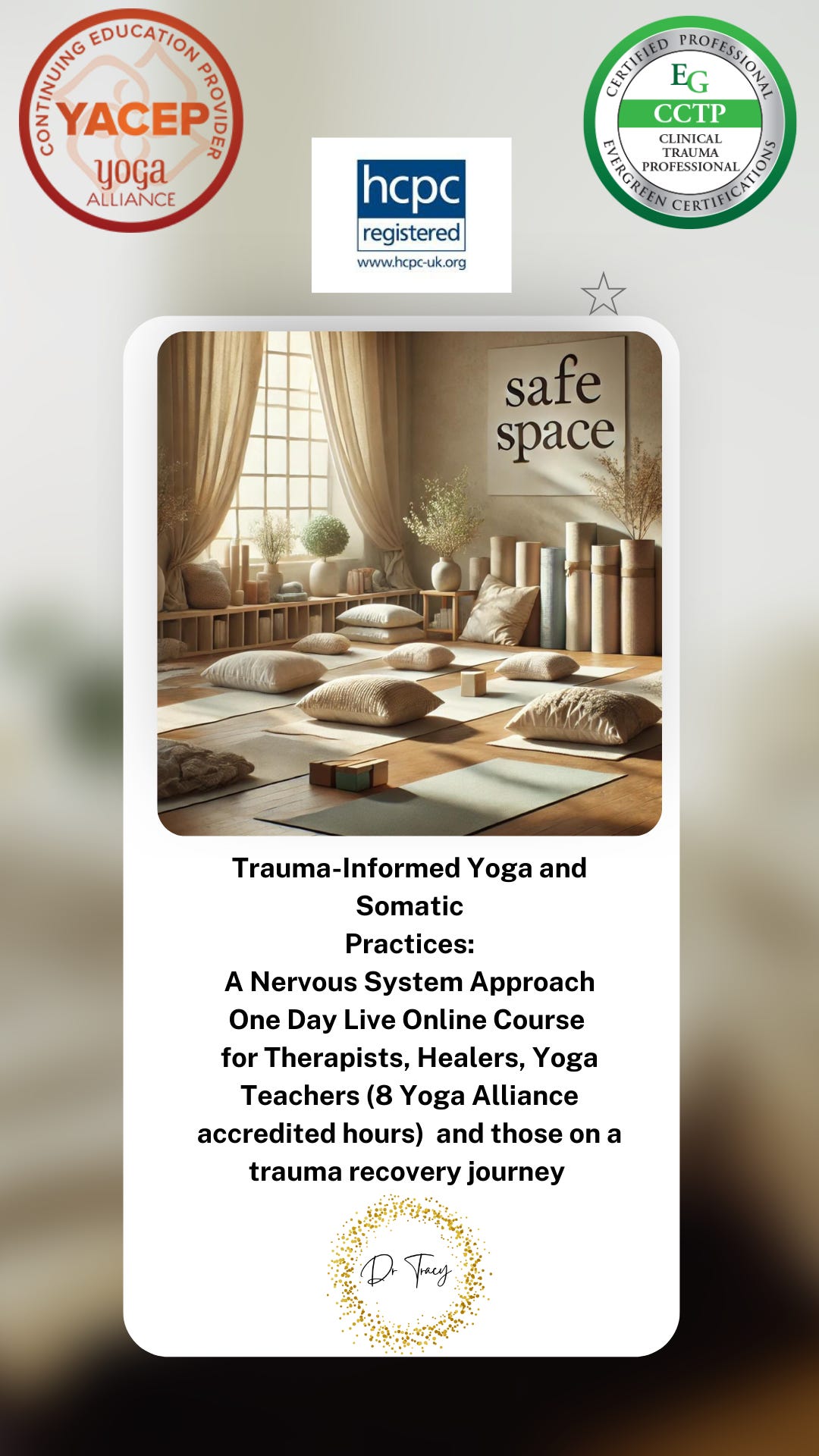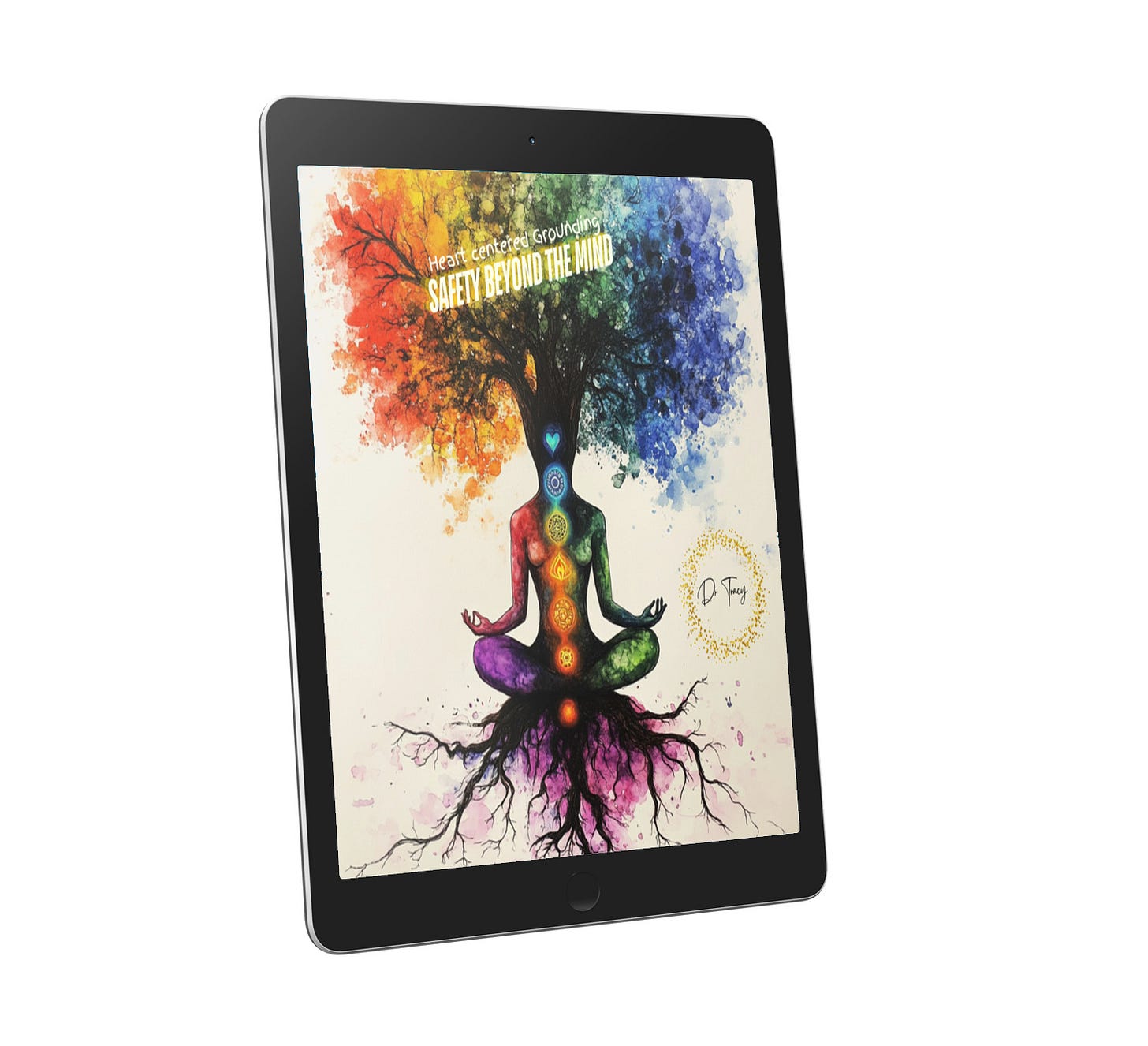There’s a particular moment in a yin yoga pose — a long-held fold, a hip opener, a shape that meets resistance — when the body starts whispering its truth.
It usually happens after the first minute of discomfort, once the fidgeting fades, and there’s nothing left to do but stay.
That’s when you start to feel the tension beneath the tension.
Not just physical tightness, but something deeper:
the way your body braces against the world.
In that stillness, something ancient surfaces.
Not through words, but through sensation.
A message from your fascia (the body’s connective tissue web that surrounds and supports muscles, bones, and organs, storing both physical tension and emotional memory, your nervous system, your lived memory):
“I don’t feel safe enough to let go.”
The Body’s First Language is Protection
Before we could name our trauma, our body had already recorded it.
The muscles learned to hold.
The breath learned to shallow.
The shoulders learned to rise.
The jaw learned to grip.
The hips learned to guard.
This is not dysfunction. It’s intelligent, adaptive biology.
Our muscles don’t just move us. They protect us.
They contract to stabilise joints and prevent injury.
They contract to prepare us for movement — especially if our nervous system senses danger and we need to run.
This contraction is part of our fight/flight/freeze response.
A flood of sympathetic activation (adrenaline, cortisol) tells the body:
Tighten. Brace. Be ready to run.
It’s how we survive a threat.
But what happens when the threat is emotional?
Or invisible?
Or constant?
The same contraction happens.
And over time, it becomes chronic.
Muscular Tension is a Somatic Story
Just like people-pleasing, dissociation, or overworking, muscular tension is a strategy.
It’s not the problem.
It’s the body’s creative solution to what felt unsafe, overwhelming, or uncertain.
It says:
“Don’t let anyone in.”
“Stay small — it’s safer.”
“Keep it together — don’t fall apart now.”
“You have to keep going.”
This is why we can’t force the body open.
Just like we can’t force ourselves out of anxiety, grief, or burnout.
We must create safety first.
And this is where yin yoga — and the parasympathetic nervous system — become sacred.
Stretching is Not Just About Flexibility — It’s About Permission
When we hold a stretch gently, without force, the body begins to negotiate:
Is it safe to go further?
Is anyone rushing me?
Am I being listened to?
Can I stay here without being judged or pushed?
The longer we stay — supported by breath, stillness, and gravity — the more the parasympathetic nervous system begins to take over.
This is the part of the nervous system responsible for:
Rest
Repair
Digestion
Softness
Surrender
It’s our body’s way of saying:
“You’re not in danger anymore. You can release.”
When the parasympathetic system engages, the muscle spindles (sensory receptors within the muscle) stop screaming “too far!”
Instead, they whisper, “you’re safe now.”
And the body — finally — lets go and you can stretch further.
Healing Is Like Stretching: It Happens in Space, Not Force
Trauma healing is not a sprint.
It’s not about pushing past resistance.
It’s about learning to meet it with compassion.
In the same way muscles contract to protect our joints, we develop emotional contractions to protect our hearts:
People-pleasing protects us from rejection.
Overworking protects us from feeling.
Numbing protects us from overwhelm.
Perfectionism protects us from shame.
And just like muscles that won’t release under tension, these strategies won’t let go under pressure.
They soften only when they feel safe, regulated, and met with presence.
The Breath as Bridge
In yin yoga, breath is the invitation.
Each exhale tells the body:
“I’m not here to fight you.”
“I’m not going to abandon you.”
“We’re allowed to soften.”
It’s not about getting deeper into the pose.
It’s about getting deeper into the body.
Into the relationship with the self you’ve long held at arm’s length.
Breath bridges the sympathetic and parasympathetic systems —
the doing and the being.
The survival and the safety.
The contraction and the expansion.
More Space to Stretch Into Means More Life to Live Into
When we calm the parasympathetic nervous system,
we don’t just get more flexible muscles —
we get more space.
More space to feel.
More space to choose differently.
More space to express and rest and not perform.
More space to say “no” and mean it.
More space to say “yes” and trust it’s real.
Stretching becomes a metaphor for everything trauma teaches us to fear:
Reaching. Expanding. Feeling. Being seen. Letting go.
But just as a tight muscle will release when it knows it’s safe,
so too will the heart, the voice, the body.
You are not forcing change.
You are creating the conditions where healing becomes possible.
Stretching is not about achievement — it’s about attunement.
What yin yoga teaches us is the same thing healing asks of us:
to slow down enough to hear what the body has been trying to say all along.
“I’ve been protecting you.”
“I didn’t know it was safe to open.”
“But I’m listening now. And I’m ready.”
So soften.
Stay.
Breathe.
And stretch — not to perform, but to come home.
A Practice for Paid Subscribers
Stretching into Safety is available at the end of this article.
If you want to know more about body-based approaches to well-being and healing why not consider my somatic approaches course where I dive more deeply into body-based ways to regulate the nervous system: Click the image below to find out more:
If you don’t want a regular commitment but would like to contribute to me helping others then click below to buy me a coffee!
I recently spoke about the importance of learning to work with your nervous system, which includes grounding, on UK Health Radio - click the image below to listen.
If you feel you want to try some meditations to help you reconnect with your body which can really help when trying to set boundaries, as you can learn to feel when something does and does not serve you. Click the images below to find out about the specific focus of each. All my meditations use healing frequencies, subliminal messages and binaural beats to enhance recovery - if these terms feel meaningless click, the images to find out more.
To continue to reconnect with your body more and remain mindful and present, see if any of these online courses from Rewire Trauma Therapy resonate with you:
Paid subscribers see my code below for 50% off courses over $240 dollars
Somatic Therapy Programme Link
For media enquiries please see my press page










